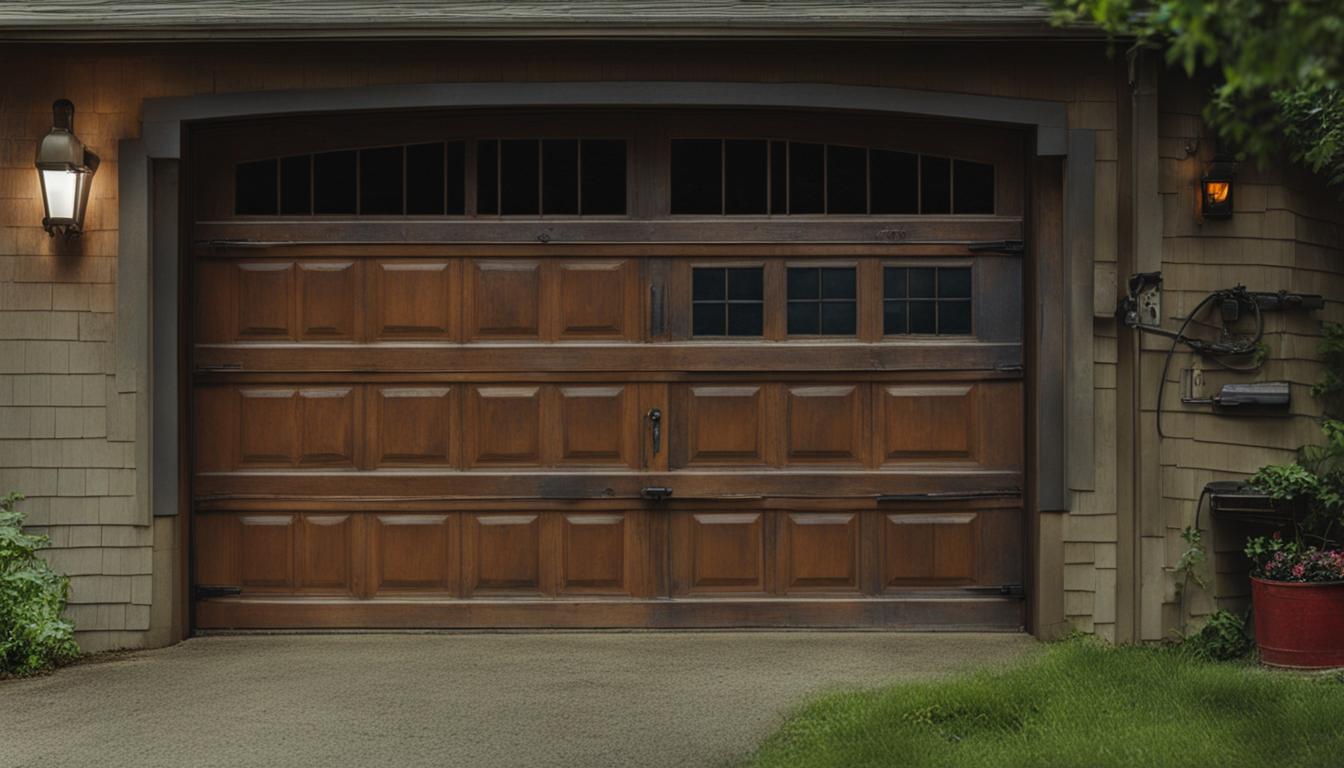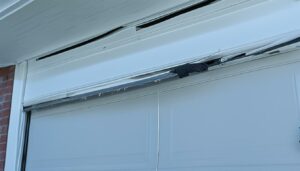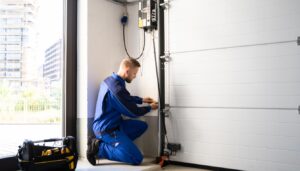Your garage door is an important part of your home, providing security for your vehicles and belongings. To ensure its longevity and smooth operation, regular maintenance and garage door inspections are essential. By identifying signs of wear and tear early on, you can prevent costly repairs and keep your garage door functioning optimally.
Start with a visual inspection to identify any visible signs of wear and tear. Look for cracks, dents, or peeling paint on the door itself. Check the weatherstripping for any damage and ensure it creates a tight seal. Proper lubrication is necessary for the smooth operation of your garage door. Apply a silicone-based lubricant to the rollers, hinges, and springs.
Regularly tighten any loose nuts and bolts on the door’s hardware to prevent accidents and ensure secure operation. It’s also important to check the balance of your garage door to avoid strain on the opener and premature wear. Testing the safety sensors is crucial to ensure they automatically reverse the door if an object is in its path.
While regular maintenance is important, it’s recommended to have a professional inspection at least once a year. A professional inspection can identify any potential issues that may go unnoticed during regular maintenance and provide necessary repairs or replacements.
Key Takeaways:
- Regular maintenance and inspections are crucial for garage door longevity.
- Visually inspect the door for signs of wear and tear, such as cracks and dents.
- Check the weatherstripping for damage and ensure a tight seal.
- Apply a silicone-based lubricant to the door’s rollers, hinges, and springs.
- Tighten loose nuts and bolts on the hardware for secure operation.
How to Inspect Your Garage Door for Signs of Wear and Tear
To ensure the longevity of your garage door, it is crucial to inspect it regularly and identify any signs of wear and tear. By catching problems early on, you can prevent costly repairs and keep your garage door in optimal condition. Here is a step-by-step guide on how to inspect your garage door:
- Visual Examination: Begin by visually inspecting your garage door. Look for cracks, dents, or peeling paint on the door itself. These are common signs of wear and tear that may need attention.
- Check Weatherstripping: Inspect the weatherstripping around the edges of your garage door. Look for any damage or gaps that could compromise its effectiveness. A tight seal is essential for energy efficiency and protecting your garage from the elements.
- Inspect Hardware: Examine the hardware, including the rollers, hinges, and springs. Look for any signs of wear or looseness. Tighten any loose nuts and bolts to ensure the smooth and secure operation of your garage door.
- Perform Balance Test: Disconnect your garage door opener and manually lift the door halfway. If it doesn’t stay in place and starts to close or open on its own, it may be unbalanced. An unbalanced door can put strain on the opener and lead to premature wear and tear.
- Test Safety Sensors: Place an object in the path of the garage door during closing to test the safety sensors. The door should automatically reverse if the sensors detect an obstruction. If the door doesn’t reverse, clean the sensor lenses and check for proper alignment.
- Examine Garage Door Opener: Inspect the garage door opener for any signs of wear or damage. Ensure that the auto-reverse feature is working correctly to prevent accidents.
Regularly inspecting your garage door using these steps allows you to identify potential issues early on and take necessary maintenance measures. By addressing signs of wear and tear promptly, you can extend the lifespan of your garage door and save on costly repairs in the long run.
“Regularly inspecting your garage door allows you to catch signs of wear and tear early on, preventing costly repairs.”
Essential Maintenance Tasks for Garage Door Longevity
Garage doors are an integral part of our homes, providing security, convenience, and aesthetic appeal. However, like any mechanical system, garage doors require regular maintenance to ensure they function optimally and have a long lifespan. Neglecting maintenance tasks can lead to costly repairs or even premature replacement of the door.
To maintain the longevity of your garage door, several essential maintenance tasks should be performed periodically. These tasks include lubricating moving parts, inspecting and adjusting springs and cables, checking for wear and tear on rollers and tracks, and testing the door’s balance and safety features. Additionally, weatherstripping and sealing any gaps around the door can enhance energy efficiency and protect your garage from the elements.
Regular maintenance is essential for ensuring the longevity and smooth operation of your garage door. By conducting these essential maintenance tasks, you can extend the lifespan of your garage door, prevent costly repairs, and ensure the safety of your family and property.
Lubrication Guide: Applying the right lubricant to your garage door’s moving parts is vital for minimizing friction, reducing noise, and prolonging the life of the components. Use a silicone-based lubricant to lubricate the rollers, hinges, and springs. Avoid using greasy substances that can attract dirt and debris, which may clog the mechanism and affect its performance.
Balance Test for Garage Doors: Performing a regular balance test is crucial for preventing premature wear and tear on your garage door opener. Start by disconnecting the opener and manually lifting the door halfway. If the door doesn’t stay in place, it may be unbalanced and require adjustment. An unbalanced door can strain the opener, leading to costly repairs and a shorter lifespan.
Garage Door Weatherstripping: Check the weatherstripping on your garage door for any signs of damage or wear. The weatherstripping creates a tight seal to keep out drafts, pests, and moisture. If you notice any cracks or gaps, replace the weatherstripping to maintain an effective seal and prevent energy loss.
Garage Door Hardware: Regularly inspect and tighten any loose hardware on your garage door, including nuts, bolts, brackets, and screws. Loose hardware can affect the door’s stability and compromise its operation. By ensuring that all hardware is secure, you can prevent accidents and ensure smooth and safe operation.
Garage Door Safety Features: Test the safety features of your garage door to ensure they are functioning correctly. This includes the auto-reverse mechanism, which should automatically reverse the door if it encounters an obstruction during closing. Additionally, test the sensors by placing an object in the door’s path. The door should automatically reverse when the sensor detects the obstruction. Regularly checking and maintaining these safety features is crucial for preventing accidents and ensuring the safety of your family and pets.
To summarize, proper garage door maintenance involves lubricating the moving parts, performing a balance test, inspecting and replacing weatherstripping when necessary, tightening loose hardware, and testing all safety features. By following these essential maintenance tasks, you can prolong the life of your garage door, enhance its performance, and ensure the safety of your home.
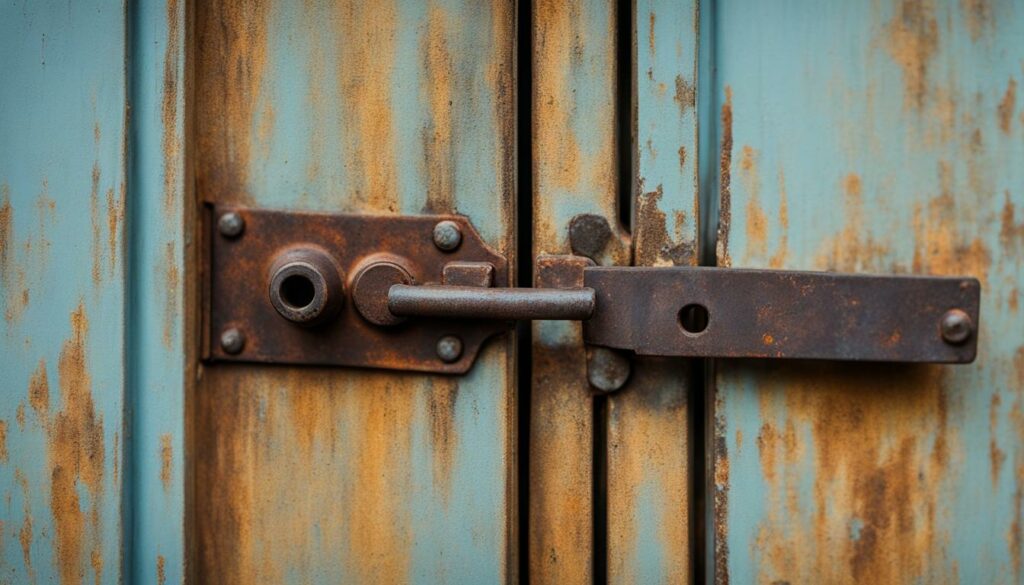
Tips for Caring for Different Garage Door Components
Caring for various components of your garage door is essential to ensure its longevity, functionality, and safety. Understanding how to maintain these components can save you time and money in the long run, while also ensuring the security of your property. From the springs and rollers to the tracks and weather seals, each part plays a crucial role in the overall performance of your garage door system. This guide offers invaluable tips and insights into effectively caring for different garage door components. By following these recommendations, you can prolong the lifespan of your garage door, prevent unexpected breakdowns, and maintain optimal functionality for years to come. Whether it’s lubricating moving parts, inspecting for wear and tear, or adjusting tension, mastering these care techniques will empower you to keep your garage door operating smoothly and efficiently.
Garage Door Panel Care
Regular cleaning and maintenance of your garage door panels are vital to protect their appearance and functionality.
- Regularly clean the panels to remove dirt and debris that can accumulate over time.
- Inspect the panels for any signs of damage, such as cracks or dents, and address them promptly.
Garage Door Window Maintenance
Proper maintenance of your garage door windows is necessary to ensure their durability and clarity.
- Regularly inspect the windows for any signs of damage, such as cracks or broken glass.
- Clean the windows with a gentle detergent and water to maintain their transparency.
Garage Door Lubricants
Regular lubrication of your garage door components is essential for smooth and quiet operation.
- Apply a silicone-based lubricant to the rollers, hinges, and springs to minimize friction and reduce noise.
Garage Door Balance Adjustments
Maintaining the balance of your garage door is crucial for preventing strain on the opener and premature wear.
- If you notice any imbalance, you may need to adjust the tension spring above each track. Seek professional assistance if necessary.
Installing Weatherstripping
Proper weatherstripping installation helps maintain a tight seal and protects your garage from drafts and moisture.
- Inspect the weatherstripping for any damage or gaps and replace it if necessary.
Aligning Garage Door Tracks
Proper alignment of the garage door tracks ensures smooth movement and prevents any potential jams.
- Regularly check the alignment of the tracks and adjust them if needed.
Garage Door Hardware
Regularly checking and tightening the hardware on your garage door is vital to prevent accidents and ensure secure operation.
- Inspect and tighten any loose brackets, rollers, and tracks to maintain stability.
By caring for these different components, you can prolong the life of your garage door and avoid costly repairs. Keep in mind that regular maintenance and inspections are key to ensuring your garage door’s longevity and optimal performance.
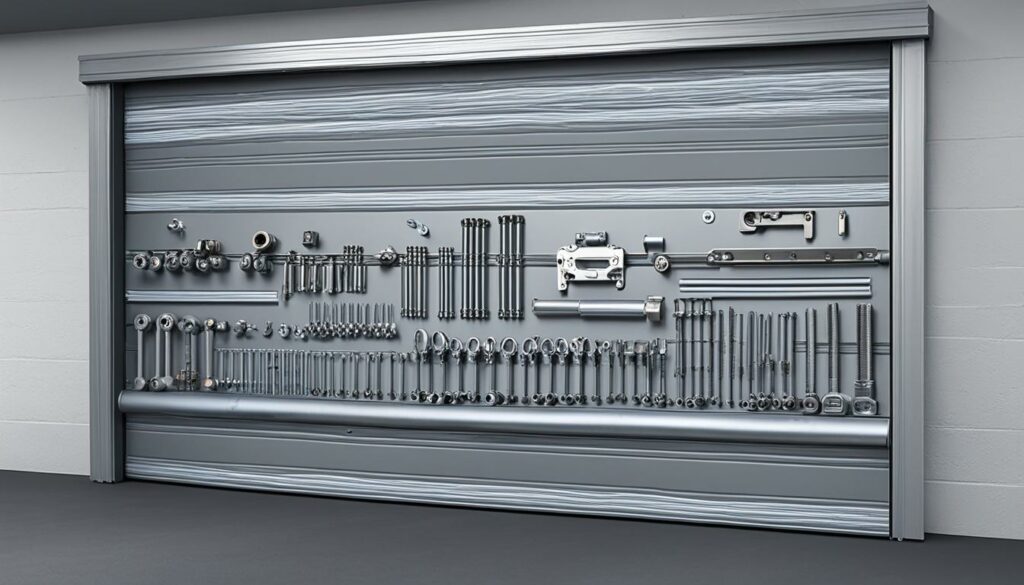
The Importance of Professional Garage Door Inspections
While regular maintenance tasks are essential for maintaining your garage door, it’s also important to have a professional inspection at least once a year. A professional garage door inspection goes beyond what can be done during regular maintenance and ensures that all components of your garage door are thoroughly assessed.
During a professional garage door inspection, experts have the knowledge and expertise to identify potential issues that may go unnoticed during routine maintenance. They can detect early signs of wear and tear, such as worn-out springs, damaged rollers, or misaligned tracks, and provide you with the necessary repairs or replacements.
By relying on professionals for your garage door inspection, you can ensure the longevity of your door and avoid costly repairs in the future. Don’t wait until something goes wrong to address potential problems. Schedule a professional inspection to keep your garage door operating smoothly for years to come.
Trust the expertise of garage door professionals for comprehensive inspections and maintenance services. Their thorough evaluation and attention to detail will give you peace of mind knowing that your garage door is in top-notch condition and will continue to serve you well.
FAQ
Why is it important to inspect my garage door for signs of wear and tear?
Regular inspection helps identify potential issues early on and prevent costly repairs. It also ensures the longevity of your garage door and enhances your home’s curb appeal.
How do I inspect my garage door for signs of wear and tear?
Start by visually examining the door for cracks, dents, or peeling paint. Check the weatherstripping for damage and ensure it creates a tight seal. Inspect the hardware for signs of wear or looseness. Additionally, perform a balance test and test the safety sensors and opener functionality.
What maintenance tasks should I perform for garage door longevity?
Regular lubrication with a silicone-based lubricant is crucial. Additionally, tighten any loose nuts and bolts on the hardware, test the balance of the door, and ensure the safety features function correctly. Replace damaged weatherstripping and maintain the alignment of tracks.
How should I care for different garage door components?
Clean the panels to remove dirt and debris. Inspect and clean the windows using a gentle detergent and water. Use appropriate garage door lubricants for rollers, hinges, and springs. Make balance adjustments as necessary and install weatherstripping for a tight seal. Regularly inspect and tighten hardware for secure operation.
How often should I schedule a professional garage door inspection?
It is recommended to have a professional inspection at least once a year. They can identify potential issues and provide necessary repairs or replacements that may go unnoticed during regular maintenance.

